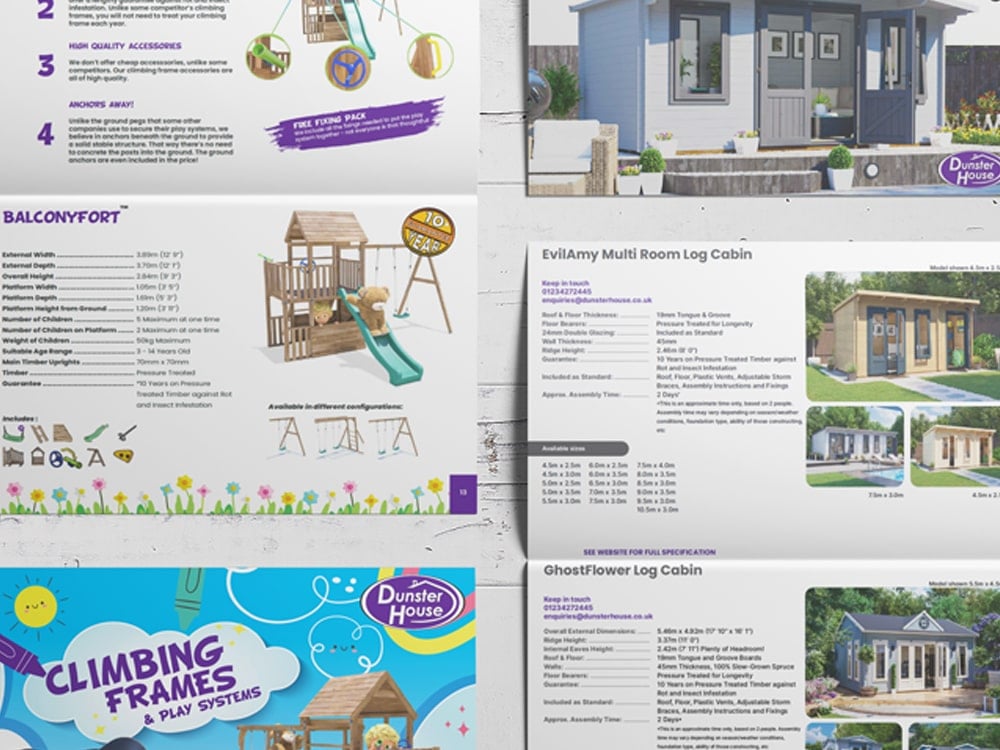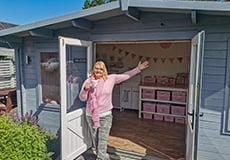If required you can download a copy of the instruction manual using the following link:
https://dunsterhouse.co.uk/customer-login-area/log-in
Maintenance is very important in order to keep your shed or summerhouse in good condition and prolong its life. We recommend that it is carried out seasonally. In this guide we will cover:
- Removing mould / mildew
- Treating the timber
- Base inspection
- Timber inspection
- Roof inspection
- Water ingress
- Locks and hinges
- Guarantees
Removing mould / mildew
If there is mould on the timber it will need to be cleaned with a mild bleach solution or mould cleaner to kill the spores. Mildew can be dealt with using a mild detergent and warm water.
Treating the timber
Products that are supplied untreated are treated before or after installation by the customer, this treatment will need to be reapplied periodically following the manufacturer’s instructions. We recommend using a solvent based treatment that contains both a water repellent and fungicide.
Products that are pressure treated should still be treated periodically with a suitable water repellent treatment to minimise, but not completely remove the possibility of twisting, warping, cracking or other physical deformation caused by changing moisture content. We use Sovereign Clear Water Repellent Wood Treatment on our display models as this creates a barrier which repels water but still allows the wood to breathe.
When treating timber you should make sure that it is free from debris and surface moisture and that the treatment is applied as per the manufacturer’s guidelines.
Base inspection
Check the condition and level of your base to make sure that there are no problems and that it has not subsided at all. An un-level base will cause issues with the product and may make it unsafe. No base timbers should be submerged in the ground as this will void the guarantee. You should keep the area weed free and any grass short so that timbers can dry out after any periods of wet weather.
Timber inspection
Check that all fixings are tightened and in good condition, replace any that have broken or sheared. Inspect the condition of the timbers and ensure that there are no broken parts, paying particular attention to structural components. Cracks and splits are normal and will be more evident in warm and dry weather, further cracks can be prevented by treating the timber as described above.
Roof inspection
If you have a roof covering such as felt or shingles, check the fixings are sound and that the covering has no holes. The roof should be kept free from debris. Shingles may become torn or flap up during adverse weather conditions, you should replace any torn tiles and fix down any that are not secure using lap adhesive and more clout nails if required. Felt does not have as long of a life expectancy as shingles and will need to be replaced when it deteriorates.
Water ingress
Most instances of water ingress can be remedied by treating the timber with a suitable preservative as covered above. However, if there is further ingress you can apply silicone sealant as you see fit to the external of the building. Please note that as timber contracts and expands with atmospheric changes the sealant may need to be removed and reapplied if it becomes ineffective. Keeping the building well ventilated throughout the year will prevent moisture or condensation inside which may lead to rot if not addressed.
Locks and hinges
If hardware becomes stiff it should be greased. As timber settles and moves the windows and doors may drop a little or require some adjustment to bring the doors closer together or further apart. Tee hinges may need to be removed and refitted to ensure correct fitting and smooth operation. Barrel hinges can be adjusted easily, please see our video guide that covers this:
https://www.youtube.com/watch?v=Rq5mADa1oCk
Guarantees
Please see the link below for details of our ten year guarantee against fungal decay and insect infestation in pressure treated timbers, as well as corrosion in hot-dipped galvanised steel:
Dunster House Guarantee





